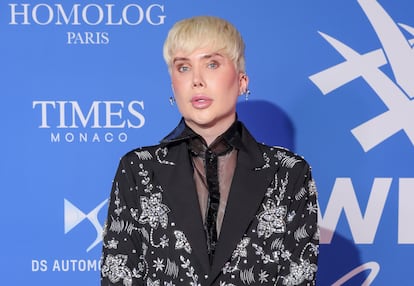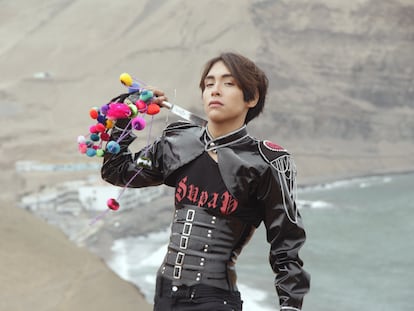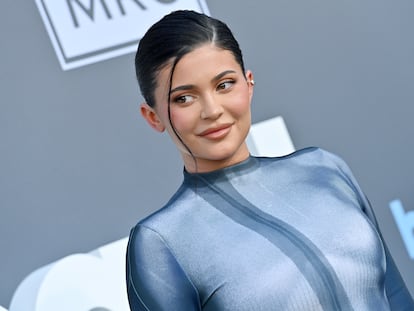Digital culture is changing our face: How South Korea is inspiring new cosmetic trends
Between the boom of K-beauty and the rise of Instagram face, a new ideal of beauty is gaining ground thanks to social media

“I’ve seen the future, and it’s poreless,” writes Elise Hu, a former NPR correspondent in Seoul, in her book Flawless: Lessons in Looks and Culture from the K-Beauty Capital. Hu lived in Seoul for five years and was introduced to the attitude of oemo jisang juui — which translates to “looks are supreme.” She learned to tolerate the mothers at school, who continually asked her when she was going to “take care of her problem.” Her “problem” was her freckles. She had to explain to her daughters why she wouldn’t give them free cosmetic procedures when they got good grades, which was a standard practice in their class, and she had to put up with the widespread suspicion that her three-year-old wore eyelash extensions. She even got used to the fact that her passport photos were retouched by default, she tells EL PAÍS by phone. In her book, she recounts what it’s like to live in the capital of a country that is defining the new global aesthetic canon, with more than 9,000 beauty brands part of the K-beauty phenomenon.
The triumph of the pan-Asian beauty canon in the West was symbolized in the transformation of British social media influencer Oli London into an Asian teenager, specifically into a clone of Jimin, the star of the K-pop band BTS. Over five years — from 2013 to 2018 — Oli spent $300,000 on 18 surgeries, including a canthoplasty to reconstruct the eyelid for a more slanted eye; a face lift; a brow lift, a temple lift and a full denture reconstruction. “For the first time in my life, I feel beautiful,” he told his Instagram followers, adding that he no longer wished to be referred to as British, because he wanted to be Korean. Although he transitioned back to a British man in 2023, his journey was a sociological and cosmetic surgery milestone.
In 2010, sociologists began to identify the trend. Academic Kimberly Kay Hoang was the first to describe the pan-Asian face. This look dilutes the features of the rest of Asia’s ethnicities, privileging the Korean standard: a mix of algorithmic data, filters and K-beauty products.
The pan-Asian canon is defined by smooth, poreless white skin, large slanted eyes, a small rosy mouth, and a fine, well-defined jaw. In a 2017 article, Kay recounted how Vietnamese prostitutes in Khong Sao Bar, a Saigon nightclub, underwent various surgeries and procedures to whiten their skin and narrow their noses. The goal was to appear more Korean, a look that elevated them aesthetically and freed them from the stigma of appearing poor, rural and backward.
The Khong Sao Bar — which is frequented by businessmen who spend between $1,000 and $2,000 a night — has connections with surgeons from Singapore, Thailand and Korea, who are trained to perform rhinoplasty in line with Korean beauty standards. Kay recounts that U.S.-trained doctors, in contrast, give women’s noses a Western look that is “unattractive” to their clients.
These are the standards of Gangnam Beauty, a term which refers to South Korean women who undergo multiple surgeries to reach their aesthetic ideal. In the book, Beyond Whiteness: Perspectives on the Rise of the Pan-Asian Beauty Ideal, authors Jeaney Yip, Susan Ainsworth and Miles Tycho Hugh point out that this canon, dominated by white skin more characteristic of Caucasians than Koreans, is a mix of European and Oriental traits that reflects the changing relationship between Asia and the West. “The pan-Asian ideal emerges in an economy of visual production as a marker of cosmopolitanism […], which has not been achieved by association with the West, but through the strategic incorporation of European elements into a predominantly Asian look, for the sake of making it look more worldly,” the authors explain in a joint email.
The pan-Asian canon also intersects with the so-called Instagram face. In the 2019 essay, “The Age of Instagram Face” published in The New Yorker, Jia Tolentino describes this look as a template of ethnically ambiguous features, constructed by filters and cosmetic surgery. It’s a young face, with poreless skin, round eyes, a small nose, full lips, high cheekbones and a strong jawline. On this template, surgeons sculpt, often on demand, the aesthetic ideal of our time.
According to Emily Raimundo, an expert in Korean culture, this ideal is a combination of various beauty standards — Hollywood, K-beauty, Bollywood — and social media filters. It’s a look that’s in line with what Jodi Melamed, a professor of African Studies at Marquette University, describes as neoliberal multiculturalism, a racial capitalism in which native diversity is diluted in favor of a watered-down but profitable image of multiculturalism.
Experts in mimetic theory say that humans are very good at imitating, and tend to wish for whatever our nearest neighbor has. And in the online world, that neighbor is the global population. But there are concerns that we spend too much time on social media, which encourage users to erase their individuality and fit into certain templates, be it on Instagram or TikTok. “Social media platforms [...] are machines for producing desire. Their equalizing structure — what is most widely celebrated about them — converts all users into each other’s potential models, doubles, and rivals, locked in a perpetual game of competition for the intangible objects of desire of the attention economy,” warned Geoff Shullenberger, a professor from New York University.
There have always been aesthetic ideals and we have always dreamed of achieving them. There are just two differences that distinguish us from our grandparents. On the one hand, the beauty canon is not just transmitted via the cinema and television, but reaches us via our cellphones, which make it appear more attainable. And on the other, we are confident that all technology, including operating rooms and surgeons, is on our side. It is likely that in a few years’ time, we will all look a few inches more alike.
Sign up for our weekly newsletter to get more English-language news coverage from EL PAÍS USA Edition
Tu suscripción se está usando en otro dispositivo
¿Quieres añadir otro usuario a tu suscripción?
Si continúas leyendo en este dispositivo, no se podrá leer en el otro.
FlechaTu suscripción se está usando en otro dispositivo y solo puedes acceder a EL PAÍS desde un dispositivo a la vez.
Si quieres compartir tu cuenta, cambia tu suscripción a la modalidad Premium, así podrás añadir otro usuario. Cada uno accederá con su propia cuenta de email, lo que os permitirá personalizar vuestra experiencia en EL PAÍS.
¿Tienes una suscripción de empresa? Accede aquí para contratar más cuentas.
En el caso de no saber quién está usando tu cuenta, te recomendamos cambiar tu contraseña aquí.
Si decides continuar compartiendo tu cuenta, este mensaje se mostrará en tu dispositivo y en el de la otra persona que está usando tu cuenta de forma indefinida, afectando a tu experiencia de lectura. Puedes consultar aquí los términos y condiciones de la suscripción digital.
More information
Archived In
Últimas noticias
Most viewed
- Sinaloa Cartel war is taking its toll on Los Chapitos
- Oona Chaplin: ‘I told James Cameron that I was living in a treehouse and starting a permaculture project with a friend’
- Reinhard Genzel, Nobel laureate in physics: ‘One-minute videos will never give you the truth’
- Why the price of coffee has skyrocketed: from Brazilian plantations to specialty coffee houses
- Silver prices are going crazy: This is what’s fueling the rally











































